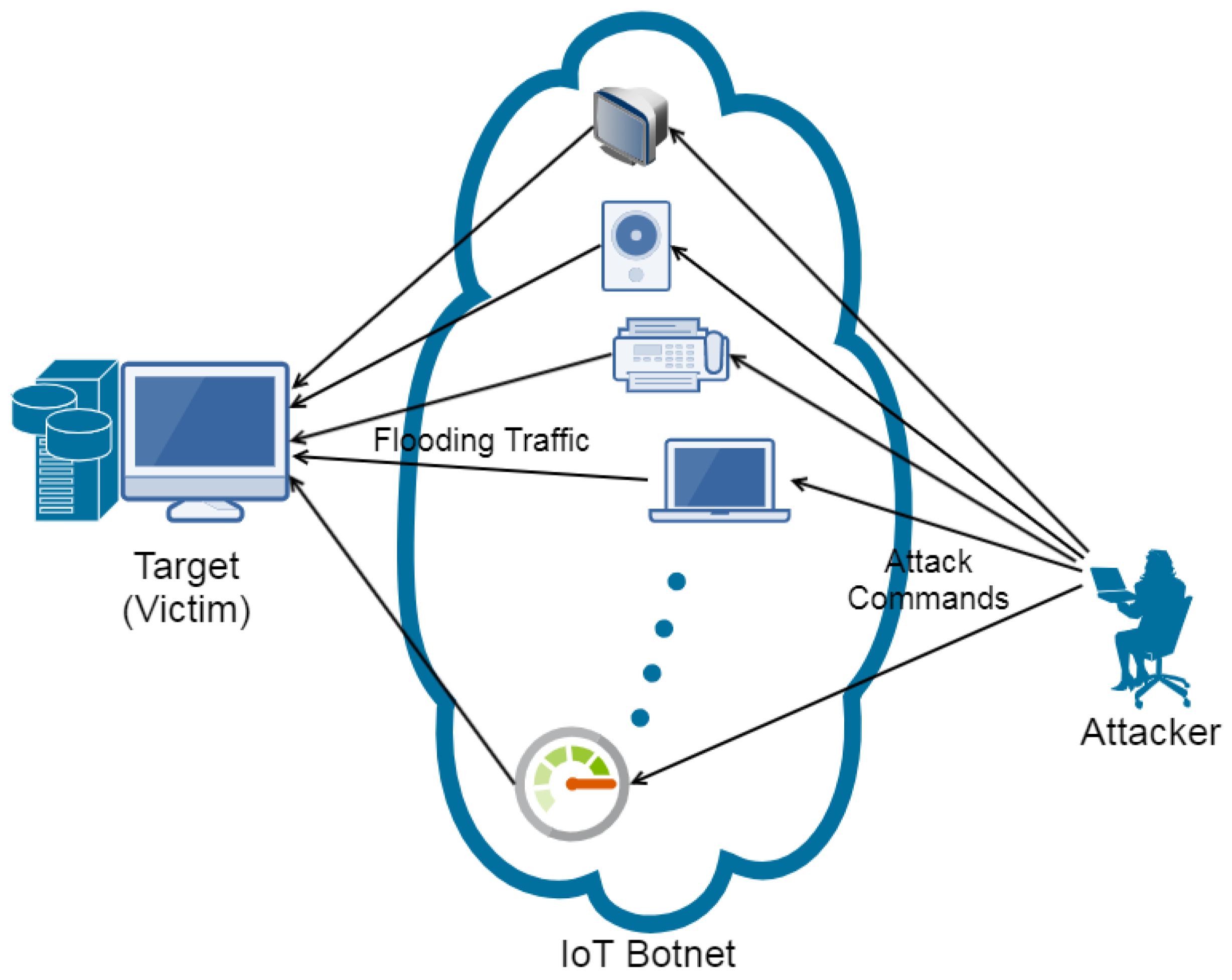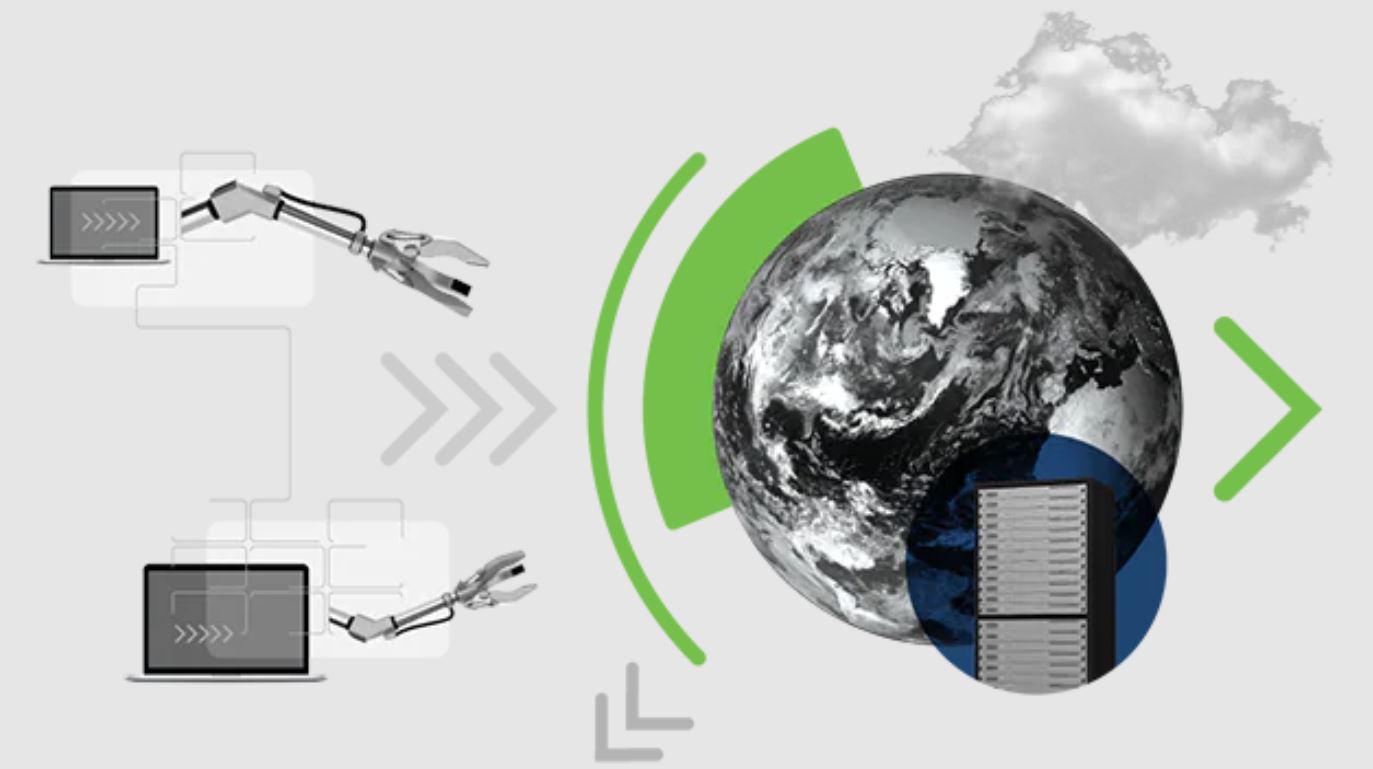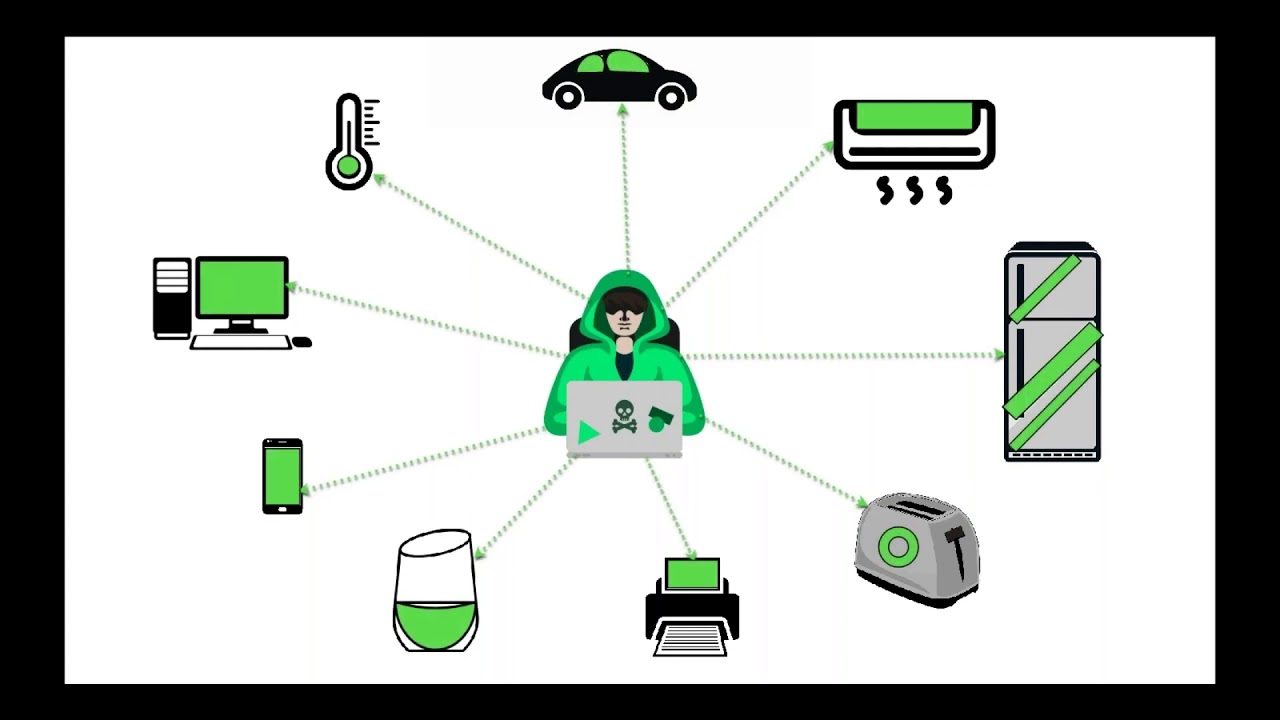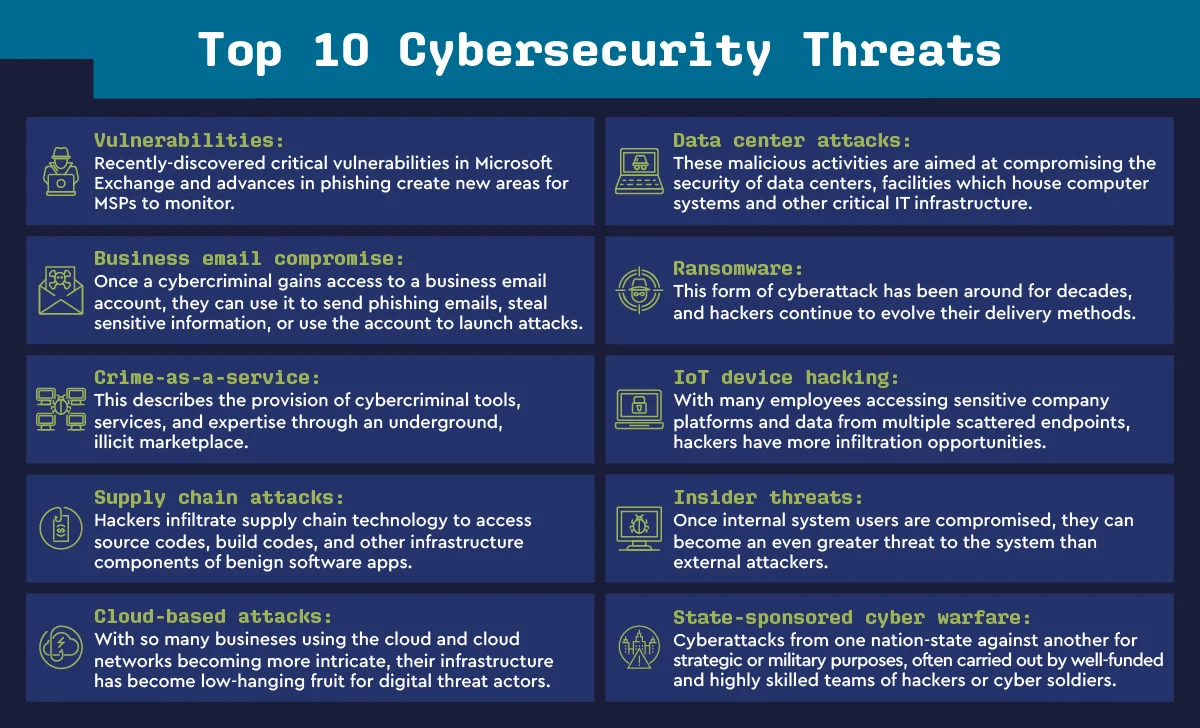Introduction
Welcome to the world of cybersecurity and the ever-evolving landscape of DDoS attacks. In today’s digital age, businesses and individuals alike heavily rely on the internet and connected devices to streamline various operations and enhance communication. However, with the benefits of increased connectivity also comes the risks associated with cyber threats, such as Distributed Denial of Service (DDoS) attacks.
A DDoS attack is a malicious attempt to disrupt the normal functioning of a computer network, service, or website by overwhelming it with a flood of internet traffic. These types of attacks can lead to server outages, downtime, financial losses, and reputational damage. While DDoS attacks have been a concern for years, a new dimension has been added to the threat landscape with the rise of Internet of Things (IoT) devices.
The IoT refers to the network of interconnected devices, ranging from household appliances to wearable devices and industrial equipment, that can communicate and share data over the internet. With the proliferation of IoT devices, the attack surface for cybercriminals has expanded, presenting new opportunities for launching large-scale and devastating DDoS attacks.
In this article, we will explore the relationship between IoT and DDoS attacks. We will delve into how these attacks are orchestrated and how IoT devices are being exploited to amplify their impact. Additionally, we will discuss recent examples of IoT-based DDoS attacks and examine the measures that can be implemented to protect IoT devices from being hijacked for malicious purposes.
As the world becomes more interconnected and our reliance on IoT devices increases, it is essential to understand the risks and take proactive measures to safeguard the integrity and security of our digital infrastructure. So, let’s dive into the fascinating and ever-changing realm of IoT and DDoS attacks.
What is DDoS?
Distributed Denial of Service (DDoS) is a type of cyber attack where a network, service, or website is overwhelmed with a massive amount of malicious traffic, rendering it inaccessible to its intended users. The goal of a DDoS attack is to disrupt the normal functioning of a target system by exhausting its resources, such as bandwidth, processing power, or memory.
DDoS attacks are typically executed by a network of compromised devices, known as a botnet, under the control of a single attacker or a group of attackers. The botnet, consisting of computers, servers, IoT devices, or even smartphones, is instructed to send a high volume of internet traffic to the target, causing it to become overwhelmed and unable to handle legitimate user requests.
There are several types of DDoS attacks, each with their own distinctive characteristics.
1. Volumetric Attacks: These attacks flood the target system with a massive volume of data packets, consuming all available bandwidth. Volumetric attacks can be further classified into UDP floods, ICMP floods, or SYN floods, depending on the type of network protocol used in the attack.
2. TCP State Exhaustion Attacks: These attacks exploit the finite resources of a target system’s TCP connection state table. By overwhelming the system with a high number of connection requests, the attacker exhausts the available TCP connections, rendering the target unresponsive.
3. Application Layer Attacks: These attacks focus on exploiting vulnerabilities in the software or application layer of a target system. They aim to exhaust the system’s computational resources, such as CPU, memory, or database capacity, by sending a large number of complex requests that require extensive processing.
DDoS attacks can have severe consequences for businesses and individuals. They can result in financial losses due to prolonged downtime, damage to the reputation of an organization, and a loss of customer trust. As technology evolves, DDoS attacks become increasingly sophisticated, necessitating robust security measures to detect and mitigate such threats.
How does a DDoS attack work?
A Distributed Denial of Service (DDoS) attack involves multiple steps and components working together to overwhelm a target system and disrupt its operations. Understanding how these attacks work is crucial in devising effective defense mechanisms against them.
The process of a DDoS attack can be broken down into the following steps:
1. Planning and Reconnaissance: The attacker identifies the target system or network they wish to disrupt. They conduct reconnaissance to gather information about the system’s vulnerabilities, network topology, and potential weaknesses.
2. Botnet Formation: The attacker assembles a botnet, a network of compromised devices under their control. These devices, which can include infected computers, servers, or IoT devices, become the attackers’ agents in executing the DDoS attack. The malware responsible for compromising these devices is often spread through tactics such as phishing emails, malicious downloads, or exploit kits.
3. Command and Control (C&C): The attacker establishes communication with the compromised devices in the botnet through a Command and Control server. This server provides instructions to the compromised devices, coordinating their actions during the attack.
4. Attack Execution: With the botnet in place, the attacker initiates the DDoS attack by directing the compromised devices to simultaneously flood the target system with a massive volume of traffic. The attack can be launched using various methods, including UDP floods, SYN floods, or HTTP floods, depending on the desired outcome and target system vulnerabilities.
5. Traffic Amplification: To maximize the impact of the attack, the attacker may employ traffic amplification techniques. These techniques exploit vulnerable network protocols or services to generate a significantly larger volume of traffic directed at the target system than what was initially sent by the compromised devices.
6. Impact: As the target system becomes overwhelmed with the influx of traffic, it exhausts its available resources, such as bandwidth, CPU, or memory. Legitimate user requests are unable to reach the system, causing service interruption or complete unavailability.
It is important to note that DDoS attacks can be challenging to mitigate due to the distributed nature of the attack and the vast number of compromised devices involved. Implementing a robust defense strategy that combines network monitoring, traffic filtering, and mitigation techniques is essential to minimize the impact of DDoS attacks and ensure the continued availability of target systems.
IoT and DDoS Attacks
The proliferation of Internet of Things (IoT) devices has opened up a new avenue for cyber attackers to execute large-scale and devastating Distributed Denial of Service (DDoS) attacks. IoT devices, with their interconnectivity and often poor security measures, have become prime targets for exploitation by malicious actors.
IoT devices include a wide range of smart devices such as smart thermostats, security cameras, smart speakers, fitness trackers, and even connected appliances. These devices are designed to collect, transmit, and receive data, often utilizing weak or default security settings, making them vulnerable to compromise.
What makes IoT devices attractive to attackers is their sheer number. With the increasing adoption of IoT in both consumer and industrial sectors, the potential number of compromised devices available for use in DDoS attacks is enormous. Attackers can amass huge botnets composed of compromised IoT devices, giving them the capability to launch more powerful and sophisticated attacks.
Another factor that contributes to the vulnerability of IoT devices is their lack of proper security measures. Many IoT devices are designed with a focus on functionality and ease of use, sacrificing security in the process. Common security flaws include weak or default passwords, unpatched software vulnerabilities, and lack of encryption for data transmission.
For an attacker, compromising an IoT device is relatively straightforward. They can exploit known vulnerabilities, employ brute-force attacks to guess weak passwords, or take advantage of poorly secured communication channels to gain unauthorized access. Once compromised, these devices can be used as part of a botnet to launch DDoS attacks.
IoT devices also pose unique challenges in terms of detecting and mitigating DDoS attacks. Traditional network security measures often struggle to differentiate between legitimate IoT device traffic and malicious traffic generated as part of a DDoS attack. Moreover, since IoT devices are typically spread across different networks and operated by different individuals or organizations, coordinating a cohesive defense becomes more complex.
Overall, the intersection of IoT and DDoS attacks presents a pressing security concern. As IoT continues to permeate our homes, workplaces, and industries, ensuring the security and resilience of these devices becomes paramount. By implementing robust security measures, conducting regular software updates, and promoting secure development practices, we can mitigate the risks posed by IoT-based DDoS attacks and safeguard the integrity of our digital ecosystems.
Understanding IoT Devices
Internet of Things (IoT) devices have revolutionized the way we interact with technology by enabling everyday objects to connect and communicate through the internet. These devices are embedded with sensors, software, and connectivity capabilities that allow them to collect data, make decisions, and interact with other devices or users.
IoT devices come in various forms and serve diverse purposes across different industries and sectors. They can be found in smart homes, healthcare facilities, manufacturing plants, transportation systems, and many other domains. Some common examples of IoT devices include connected thermostats, smart speakers, fitness trackers, industrial sensors, and even autonomous vehicles.
What sets IoT devices apart from traditional devices is their ability to gather and transmit data. They can collect information from their surroundings using built-in sensors, such as temperature sensors, motion detectors, or humidity sensors. This data is then processed and analyzed either locally or in the cloud to derive insights and trigger appropriate actions.
IoT devices rely on various communication protocols to transmit data and interact with other devices or systems. These protocols include Wi-Fi, Bluetooth, Zigbee, Z-Wave, and cellular networks. The choice of communication protocol depends on factors such as range, bandwidth requirements, energy efficiency, and compatibility with existing infrastructure.
The nature of IoT devices necessitates a high degree of connectivity. They need to be able to transmit data to and receive instructions from remote servers or other devices. This connectivity allows for real-time monitoring, control, and automation, enabling more efficient and streamlined operations in various domains.
However, the interconnected and always-on nature of IoT devices also introduces security risks. Due to their vast numbers and often lax security measures, they can be seen as low-hanging fruit by attackers looking to compromise devices for malicious purposes. Weak passwords, unpatched software vulnerabilities, and inadequate encryption can expose IoT devices to potential risks.
Understanding the complexities and unique characteristics of IoT devices is crucial for comprehending the challenges associated with securing them. As the number of IoT devices continues to grow, it is important for manufacturers, developers, and users to prioritize security measures and adopt best practices to protect these devices and the valuable data they collect and transmit.
How are IoT devices used in DDoS attacks?
Internet of Things (IoT) devices have become a prominent tool for cyber attackers, providing them with a means to execute large-scale and disruptive Distributed Denial of Service (DDoS) attacks. The unique characteristics of IoT devices make them valuable assets for malicious actors seeking to launch DDoS attacks.
The primary way in which IoT devices are utilized in DDoS attacks is by incorporating them into a botnet. A botnet is a network of compromised devices that can be controlled remotely by the attacker. IoT devices often lack proper security measures, making them vulnerable to compromise. Attackers exploit this vulnerability to gain unauthorized access and turn these devices into their agents for launching DDoS attacks.
Once an IoT device is compromised, the attacker has control over it and can direct it to generate and send a massive volume of internet traffic to a target system or network. This flood of traffic overwhelms the target’s resources, resulting in service disruption or complete unavailability.
The sheer number of IoT devices available for recruitment allows attackers to create botnets with significant firepower. The scale of these botnets amplifies the potency of DDoS attacks, making them more challenging to mitigate.
Another aspect that makes IoT devices attractive for DDoS attacks is their always-on and connected nature. IoT devices are typically designed to operate 24/7, providing a constant stream of traffic when compromised. Moreover, they are often connected to high-bandwidth networks, enabling the attacker to harness their collective power to generate substantial traffic volume.
IoT devices are particularly appealing to attackers due to their widespread adoption in both consumer and industrial settings. Any device that is connected to the internet and possesses vulnerabilities can potentially be infiltrated and used as an unwitting accomplice in a DDoS attack.
It is important to note that not all IoT devices are equally susceptible to being compromised for use in DDoS attacks. Vulnerabilities such as default or weak passwords, unpatched software, and insecure communication channels render certain devices more prone to exploitation. Manufacturers and users alike must prioritize implementing robust security measures and regularly updating device software to reduce the risk of compromise.
As IoT devices continue to proliferate, the potential for them to be exploited in DDoS attacks grows. It is imperative for manufacturers to prioritize security in the design and development of IoT devices, and for users to be vigilant in securing their devices to mitigate this risk.
The Mirai Botnet
The Mirai botnet stands as a significant milestone in the world of cybercrime, demonstrating the devastating potential of Internet of Things (IoT) devices when harnessed for malicious purposes. It emerged in 2016 and quickly gained notoriety for its role in some of the largest and most disruptive Distributed Denial of Service (DDoS) attacks ever recorded.
Mirai was different from previous botnets in that it specifically targeted vulnerable IoT devices for recruitment. The malware responsible for the botnet would scan the internet for IoT devices with default or weak passwords, exploiting these security flaws to gain unauthorized access and force the devices into the botnet.
Once infected, the compromised devices became part of a massive network, collectively working together to launch DDoS attacks. The botnet was capable of generating an unprecedented volume of traffic, delivering devastating blows to its targets.
In its prime, the Mirai botnet reached an estimated size of hundreds of thousands of compromised devices. Attackers used the botnet to launch high-profile attacks against prominent targets, including Dyn, a major DNS service provider. The attack against Dyn in October 2016 caused widespread outages and disruptions, affecting numerous popular websites and services such as Twitter, Reddit, and Netflix.
The success of Mirai was attributed to several factors, including the large number of vulnerable IoT devices available for compromise and the lack of effective security measures implemented by manufacturers and users. This allowed the botnet to grow rapidly and launch attacks on an unprecedented scale.
Notably, the release of the Mirai source code further fueled the proliferation of IoT-based botnets. Other cybercriminals took advantage of the open-source code, modifying and enhancing it to create their own botnets, resulting in an explosion of similar attacks.
While law enforcement agencies and cybersecurity experts have taken action to combat and dismantle the Mirai botnet, its impact continues to serve as a stark reminder of the vulnerabilities inherent in IoT devices. The Mirai botnet demonstrated the potential for massive-scale and disruptive DDoS attacks that can be launched using compromised IoT devices.
To mitigate the risk posed by botnets like Mirai, it is crucial for manufacturers to improve IoT device security standards and users to adopt best practices in protecting their devices. Regularly updating firmware, changing default passwords, and implementing robust network security measures can help prevent devices from being conscripted into botnets and utilized in future DDoS attacks.
Recent Examples of IoT-based DDoS Attacks
Over the years, there have been numerous instances of devastating Distributed Denial of Service (DDoS) attacks that have leveraged the vulnerabilities of Internet of Things (IoT) devices. These attacks have demonstrated the significant impact that compromised IoT devices can have on disrupting services and infrastructure. Here are some recent examples of IoT-based DDoS attacks:
1. Dyn Attack: In 2016, the Mirai botnet orchestrated a massive DDoS attack against Dyn, a major DNS service provider. The attack targeted IoT devices, overwhelming DNS infrastructure and causing widespread outages, affecting popular websites and services.
2. KrebsOnSecurity Attack: In the same year, security blogger Brian Krebs’ website, KrebsOnSecurity, was targeted by a powerful DDoS attack. The attack, again orchestrated by the Mirai botnet, generated an unprecedented amount of traffic, surpassing what the hosting provider could handle.
3. Liberia Attack: In 2016, the Mirai botnet struck again, this time launching a significant DDoS attack on Liberia’s internet infrastructure. The attack resulted in temporary disruptions in internet connectivity for the entire country, highlighting the potential for IoT-based attacks to have a wide-reaching impact.
4. Deutsche Telekom Attack: In 2016, a variant of the Mirai malware infected thousands of Deutsche Telekom routers in Germany, causing widespread service disruptions for their customers. The attack highlighted the vulnerability of routers and the potential for IoT devices connected to telecommunications networks to be exploited.
5. Mirai Reloaded Attacks: Following the release of the Mirai source code, several variants and spin-offs emerged. In 2018, a new variant, known as “Mirai Reloaded,” targeted Deutsche Telekom and other telecommunication companies, causing significant disruptions in services for customers.
6. IoTroop/Botnet Reaper: In 2017, a new IoT botnet, dubbed IoTroop or Reaper, was discovered. This botnet primarily targeted vulnerabilities in IoT devices, infecting them and creating a network of compromised devices. While it has been relatively inactive, the potential for its activation and destructive capability remains a concern.
These recent examples illustrate the ongoing threat posed by IoT-based DDoS attacks. The scale, complexity, and impact of these attacks underscore the importance of securing IoT devices and implementing robust measures to protect against compromise.
Cybersecurity experts and researchers continue to monitor and analyze IoT-related threats, searching for proactive solutions to mitigate these risks. It is crucial for manufacturers, service providers, and end-users to remain vigilant, implementing strong security practices and regularly updating IoT devices to safeguard against potential DDoS attacks.
Protecting IoT Devices from DDoS Attacks
Given the growing prevalence of Internet of Things (IoT) devices and the potential risks they pose in Distributed Denial of Service (DDoS) attacks, it is crucial to implement measures to protect these devices from compromise. Here are some key strategies and best practices for securing IoT devices:
1. Strong Authentication: Ensure that IoT devices use strong and unique passwords by default. Encourage users to change default credentials during the initial setup and regularly update passwords to mitigate the risk of brute-force attacks.
2. Regular Firmware Updates: Install firmware updates and security patches provided by the manufacturers. These updates often include bug fixes, vulnerability patches, and enhanced security measures, protecting devices from known exploits.
3. Network Segmentation: Segregate IoT devices into dedicated networks or VLANs (Virtual Local Area Networks) distinct from critical infrastructure or personal devices. This helps contain potential attacks and limits the impact to specific segments of the network.
4. Traffic Monitoring and Analysis: Implement network monitoring and traffic analysis solutions to detect anomalous behavior or suspicious traffic patterns. This enables rapid identification and response to potential DDoS attacks.
5. Device Whitelisting: Maintain an inventory of authorized devices and use access control lists to only allow known and trusted devices to connect to the network infrastructure. This helps prevent unauthorized IoT devices from gaining access.
6. Encryption and Secure Communication: Utilize strong encryption protocols (e.g., HTTPS, SSH) for data transmission, preventing eavesdropping or tampering. Employ secure communication channels and protocols to protect sensitive information.
7. IoT Security Standards: Support and adhere to industry-standard security guidelines and frameworks for IoT devices. Compliance with recognized security protocols helps ensure that devices are developed and deployed with strong security measures.
8. Intrusion Detection and Prevention Systems (IDPS): Implement IDPS solutions specifically designed for IoT environments. These systems can monitor network traffic, detect anomalies, and automatically block suspicious activities to mitigate potential attacks.
9. User Education and Awareness: Educate users about the risks associated with IoT devices and the importance of following security best practices. Promote awareness of social engineering tactics, phishing attacks, and the need for regular software updates.
By adopting these protective measures, IoT devices can be better shielded from potential compromise and utilization in DDoS attacks. As the IoT landscape continues to evolve, it is essential to prioritize and implement strong security practices to safeguard both individual devices and the entire IoT ecosystem.
Best Practices for IoT Security
Securing Internet of Things (IoT) devices is crucial to prevent potential attacks and protect the integrity of data and infrastructure. Here are some essential best practices to enhance IoT security:
1. Implement Strong Authentication: Ensure that IoT devices use strong authentication methods such as unique usernames and passwords, two-factor authentication, or biometric authentication. This reduces the risk of unauthorized access and compromise.
2. Enable Device Encryption: Implement data encryption capabilities on IoT devices to protect sensitive information. Encryption ensures that data transmitted between devices and storage systems remains confidential and cannot be intercepted or tampered with.
3. Regularly Update Firmware: Keep IoT device firmware up to date with the latest patches and security updates provided by the manufacturer. Regular updates address vulnerabilities and protect against known exploits.
4. Employ Least Privilege Principle: Limit device privileges to only necessary functions and services. Restricting access rights mitigates the impact of compromised devices and limits the attacker’s ability to exploit vulnerabilities.
5. Secure Communication Protocols: Utilize secure communication protocols, such as Transport Layer Security (TLS) or Secure Shell (SSH), for data transmission between devices and networks. Secure protocols ensure data integrity and confidentiality.
6. Conduct Regular Security Audits: Perform periodic security audits of IoT devices and their supporting infrastructure. Evaluate the effectiveness of security measures, identify weaknesses, and address vulnerabilities promptly.
7. Network Segmentation: Isolate IoT devices on dedicated network segments to prevent lateral movement in case of compromise. This also helps reduce the attack surface and contain potential threats within a confined segment.
8. Implement Intrusion Detection Systems (IDS) and Intrusion Prevention Systems (IPS): Deploy IDS and IPS solutions to monitor network traffic and detect any unusual or suspicious activity. This enables swift response to potential attacks and improves overall security posture.
9. Regular User Education and Training: Educate users and administrators about the importance of IoT security, such as the risks associated with weak passwords, phishing attacks, and the significance of keeping devices and software up to date. Promote a security-conscious culture.
10. Compliance with IoT Security Standards: Comply with established IoT security standards and frameworks, such as the OWASP Internet of Things Top 10 project, NIST IoT Device Cybersecurity Guidance, or ISO/IEC 27001. Adhering to these standards ensures adherence to industry best practices.
By following these best practices, organizations and individuals can significantly enhance the security of their IoT devices, mitigate risks, and protect against potential breaches and attacks. Adopting a proactive and comprehensive approach to IoT security is essential as the IoT ecosystem continues to expand and evolve.
Conclusion
The intersection of Internet of Things (IoT) devices and Distributed Denial of Service (DDoS) attacks presents a formidable challenge in today’s digital landscape. IoT devices, with their interconnectedness and often inadequate security measures, have become prime targets for cybercriminals seeking to execute large-scale and disruptive attacks.
Understanding the nature of DDoS attacks and the vulnerabilities inherent in IoT devices is crucial in formulating effective defense strategies. DDoS attacks are orchestrated by compromising a network of devices, creating a botnet that inundates a target system with a deluge of traffic, effectively rendering it inaccessible to legitimate users.
Recent examples, such as the Mirai botnet, have showcased the devastating impact that compromised IoT devices can have. These attacks have disrupted critical services, causing widespread outages and highlighting the need for improved security measures.
To protect IoT devices from being exploited for DDoS attacks, several best practices should be followed. Implementing strong authentication, regularly updating firmware, utilizing secure communication protocols, and educating users about IoT security risks are essential steps toward safeguarding these devices.
Additionally, network segmentation, traffic monitoring, and the adoption of intrusion detection and prevention systems (IDPS) help detect and mitigate potential threats. Compliance with IoT security standards and industry guidelines further reinforces the security posture of IoT devices and networks.
As technology continues to advance, IoT devices will become even more integrated into our daily lives. This necessitates a proactive and comprehensive approach to IoT security, with manufacturers, service providers, and end-users all playing their part in safeguarding against DDoS attacks.
By prioritizing IoT security measures, raising awareness, and implementing best practices, we can mitigate the risks associated with IoT-based DDoS attacks. Only through collective effort and continuous improvement in IoT security can we ensure the resilience, integrity, and security of our digital infrastructure.

























